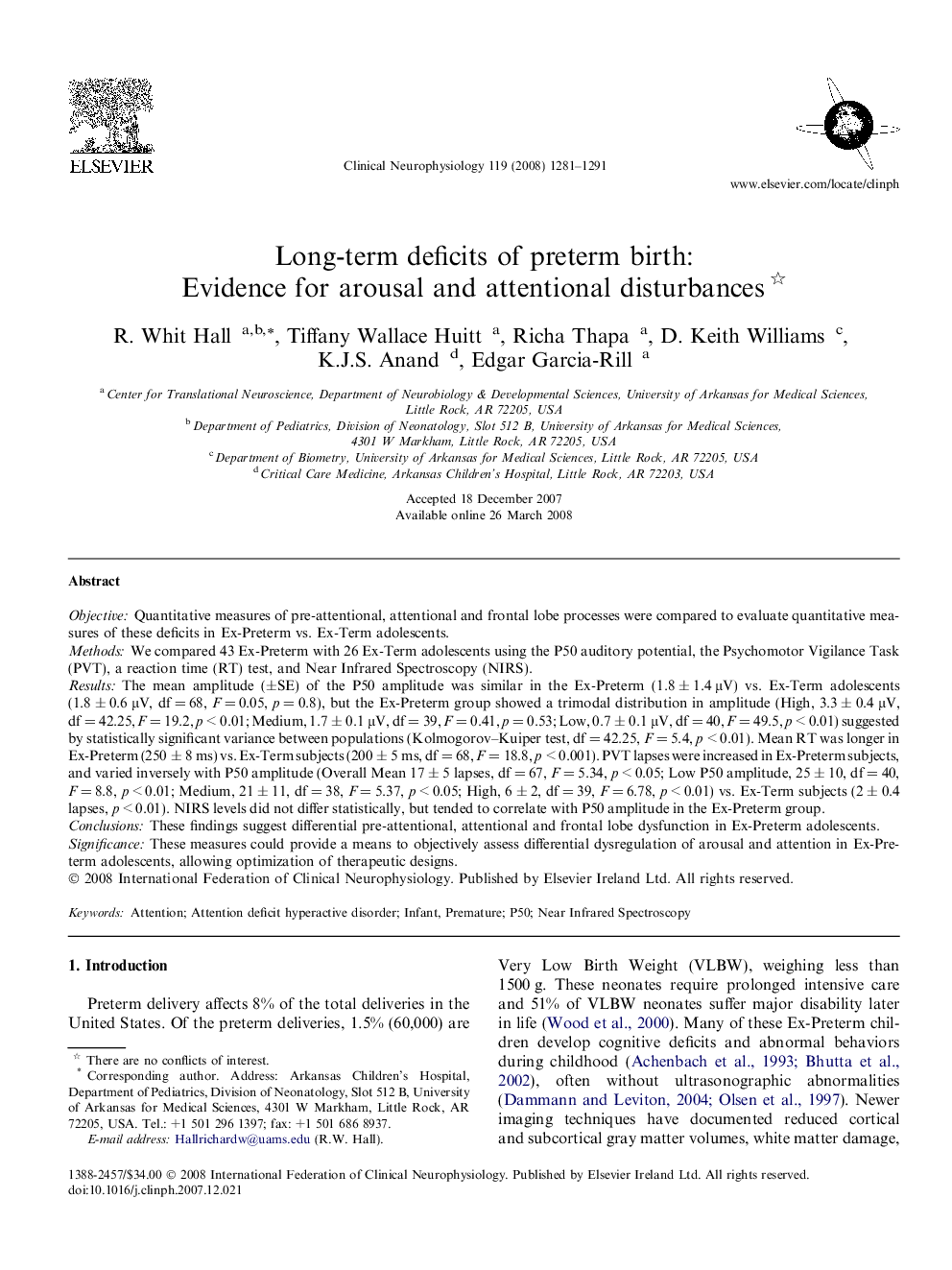| Article ID | Journal | Published Year | Pages | File Type |
|---|---|---|---|---|
| 3047446 | Clinical Neurophysiology | 2008 | 11 Pages |
ObjectiveQuantitative measures of pre-attentional, attentional and frontal lobe processes were compared to evaluate quantitative measures of these deficits in Ex-Preterm vs. Ex-Term adolescents.MethodsWe compared 43 Ex-Preterm with 26 Ex-Term adolescents using the P50 auditory potential, the Psychomotor Vigilance Task (PVT), a reaction time (RT) test, and Near Infrared Spectroscopy (NIRS).ResultsThe mean amplitude (±SE) of the P50 amplitude was similar in the Ex-Preterm (1.8 ± 1.4 μV) vs. Ex-Term adolescents (1.8 ± 0.6 μV, df = 68, F = 0.05, p = 0.8), but the Ex-Preterm group showed a trimodal distribution in amplitude (High, 3.3 ± 0.4 μV, df = 42.25, F = 19.2, p < 0.01; Medium, 1.7 ± 0.1 μV, df = 39, F = 0.41, p = 0.53; Low, 0.7 ± 0.1 μV, df = 40, F = 49.5, p < 0.01) suggested by statistically significant variance between populations (Kolmogorov–Kuiper test, df = 42.25, F = 5.4, p < 0.01). Mean RT was longer in Ex-Preterm (250 ± 8 ms) vs. Ex-Term subjects (200 ± 5 ms, df = 68, F = 18.8, p < 0.001). PVT lapses were increased in Ex-Preterm subjects, and varied inversely with P50 amplitude (Overall Mean 17 ± 5 lapses, df = 67, F = 5.34, p < 0.05; Low P50 amplitude, 25 ± 10, df = 40, F = 8.8, p < 0.01; Medium, 21 ± 11, df = 38, F = 5.37, p < 0.05; High, 6 ± 2, df = 39, F = 6.78, p < 0.01) vs. Ex-Term subjects (2 ± 0.4 lapses, p < 0.01). NIRS levels did not differ statistically, but tended to correlate with P50 amplitude in the Ex-Preterm group.ConclusionsThese findings suggest differential pre-attentional, attentional and frontal lobe dysfunction in Ex-Preterm adolescents.SignificanceThese measures could provide a means to objectively assess differential dysregulation of arousal and attention in Ex-Preterm adolescents, allowing optimization of therapeutic designs.
